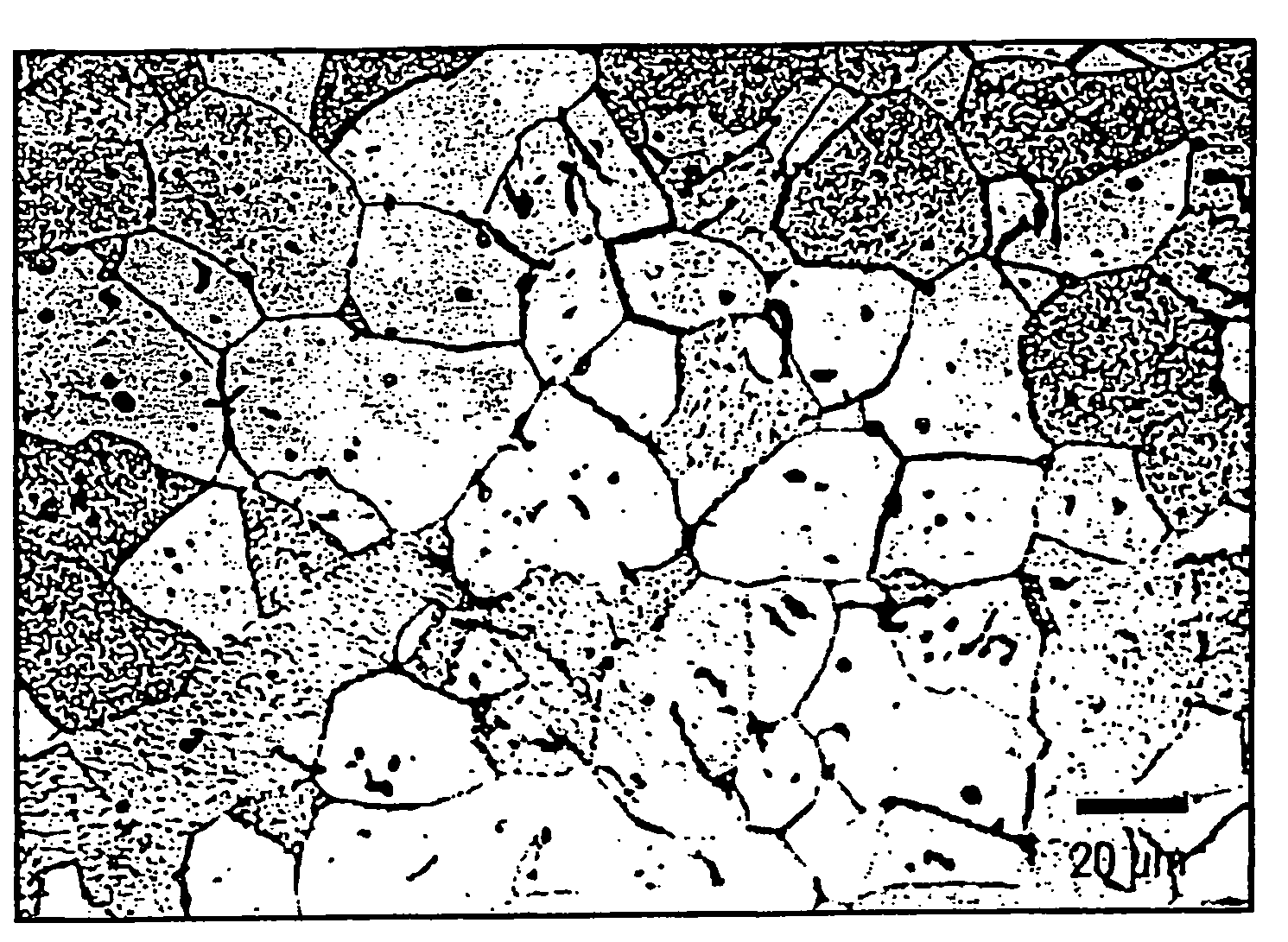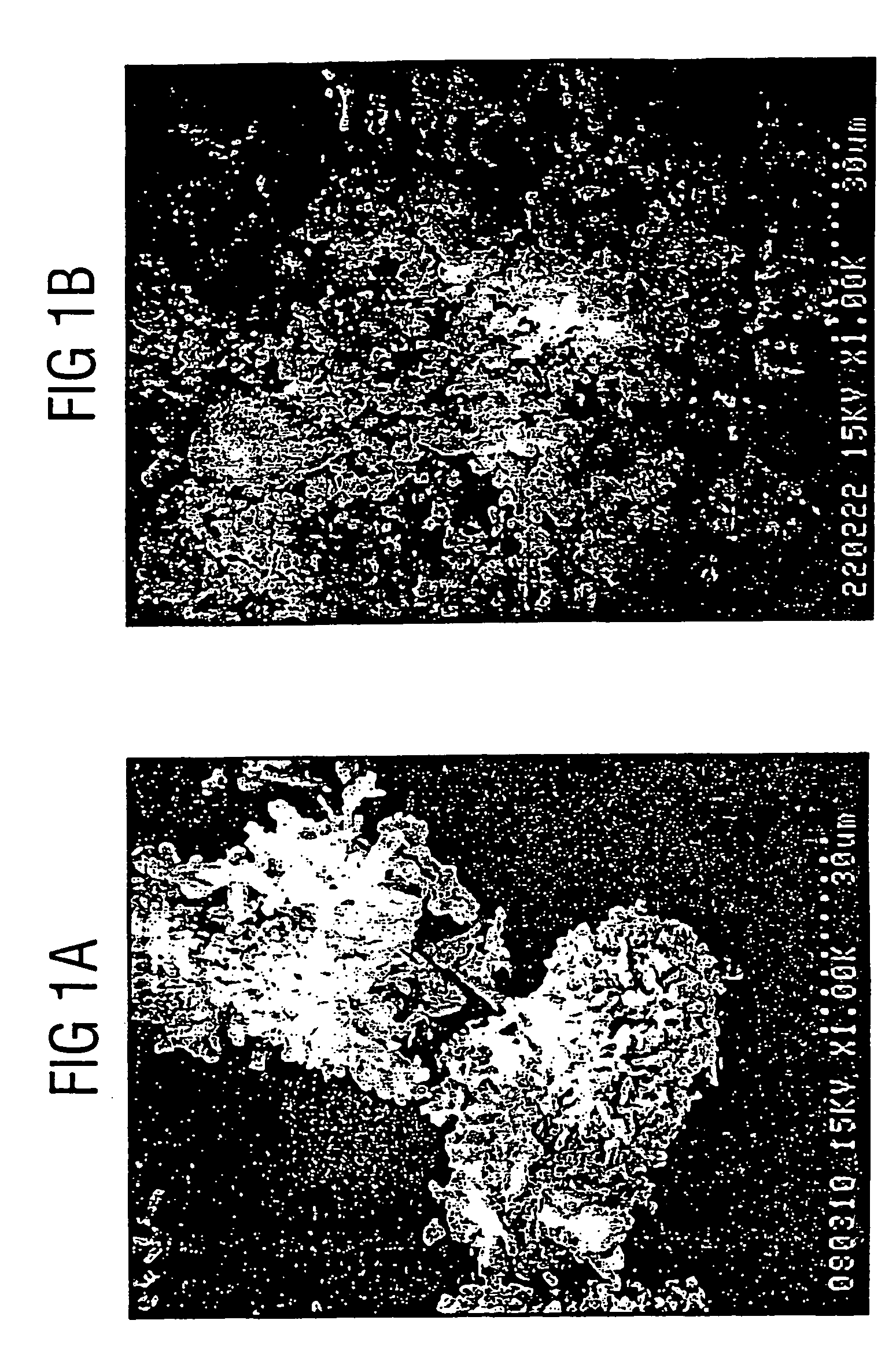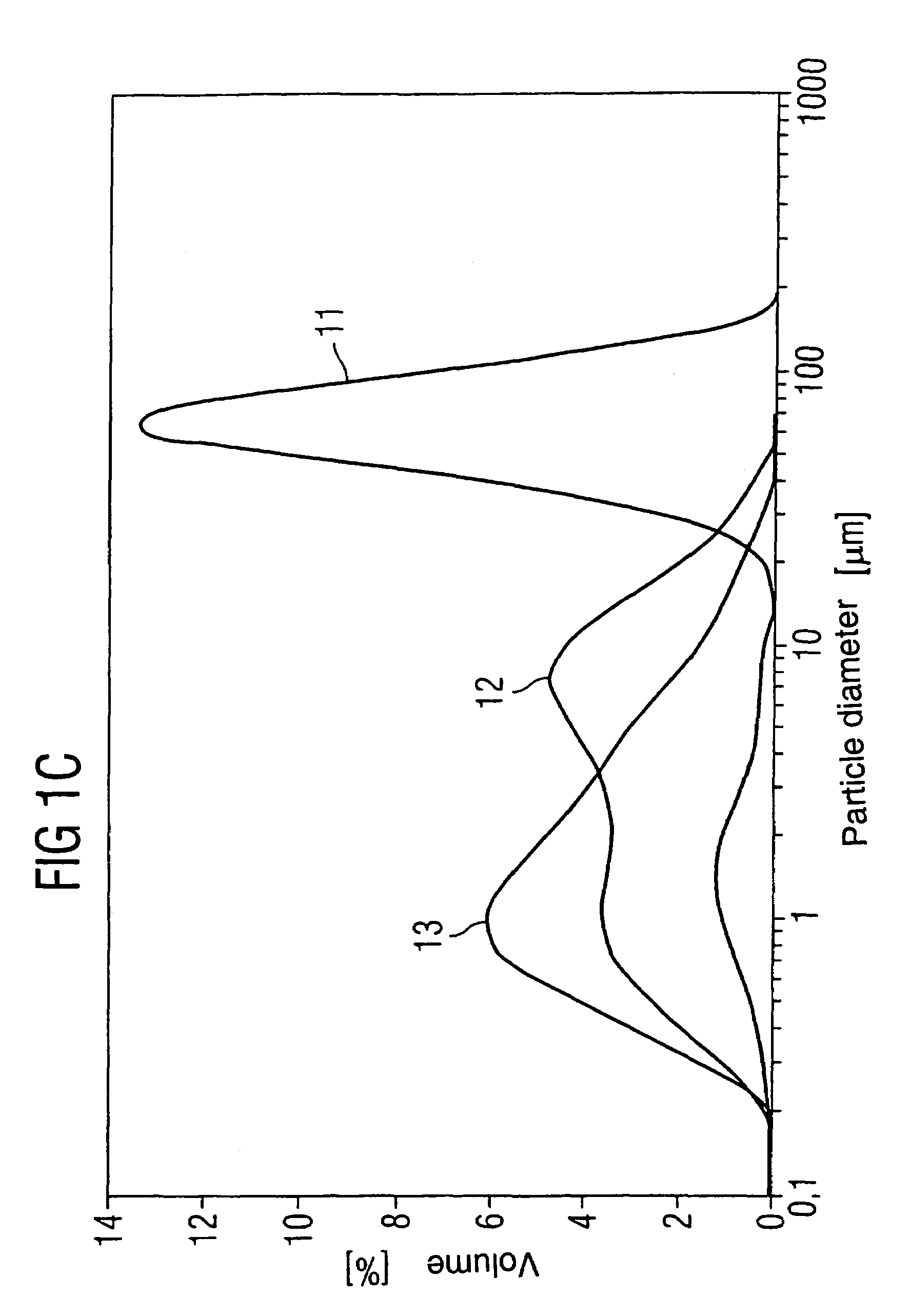Method for producing a scintillator ceramic
- Summary
- Abstract
- Description
- Claims
- Application Information
AI Technical Summary
Benefits of technology
Problems solved by technology
Method used
Image
Examples
Embodiment Construction
[0034]FIGS. 1a and 1b show the powder morphology of a GOS material before and after treatment in a wet milling process with the addition of organic milling fluid, from which it clearly emerges that the particle size of the GOS has been markedly reduced, namely to c shows the powder size distribution of the GOS material. Without treatment (11) the average particle size is about 100 μm. The wet milling process reduces the average particle size to <10 μm (12, milling time 19 hours, 13, milling time 67 hours).
[0035]FIG. 2 shows the morphology of a GOS granulate produced by a rotation evaporator process. This granulate is soft and free-flowing due to its largely homogeneous granule size.
[0036]This particle size distribution of the powder obtained is important for the compacts produced from the powder or its relative green density, as the relative sintered density of the end product depends on it. This relationship is shown in FIG. 3 from which it can be seen that, with increasing relativ...
PUM
| Property | Measurement | Unit |
|---|---|---|
| Grain size | aaaaa | aaaaa |
| Temperature | aaaaa | aaaaa |
| Temperature | aaaaa | aaaaa |
Abstract
Description
Claims
Application Information
 Login to View More
Login to View More - R&D
- Intellectual Property
- Life Sciences
- Materials
- Tech Scout
- Unparalleled Data Quality
- Higher Quality Content
- 60% Fewer Hallucinations
Browse by: Latest US Patents, China's latest patents, Technical Efficacy Thesaurus, Application Domain, Technology Topic, Popular Technical Reports.
© 2025 PatSnap. All rights reserved.Legal|Privacy policy|Modern Slavery Act Transparency Statement|Sitemap|About US| Contact US: help@patsnap.com



